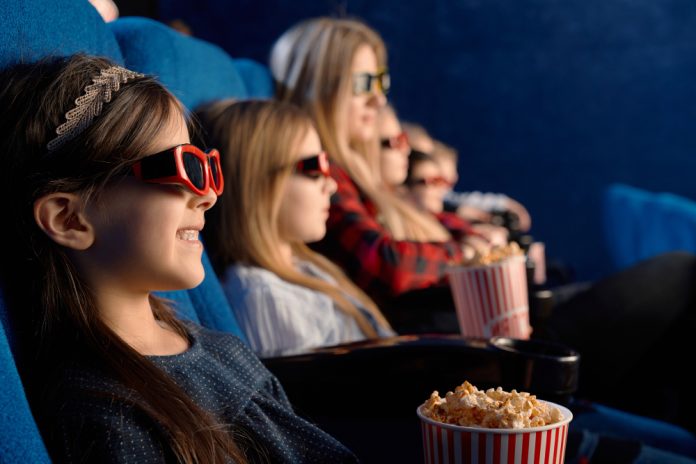Films are generally considered for their pure entertainment values, but they are not limited to that. They can have an educational effect because students can watch movies and learn rather than just spend a good time in front of their screens.
If employed appropriately, watching films at school can significantly benefit students by fostering their learning and developing their critical thinking skills. This is why we could say that movies are an essential topic in the educational process.
Students could enjoy a good story, but at the same time, they can engage in a more relevant learning experience directly linked to what they are reading or studying at school. More importantly, using moving images in the educational format could help them develop their critical thinking skills. In this article, you’ll learn how movies can enhance education and foster deeper learning.
Engaging Visual Learning
One of the essential advantages of movies in education is their ability to motivate visual learners. Many students understand the material better when they see it with their own eyes. Films help students visualize topics and make them come to life by showing the exact circumstances and feelings involved. Here are several ways movies can foster learning:
- Illustrating Historical Events: Historical films allow students to witness events like the Civil Rights Movement, connecting them to the material on a deeper level.
- Simplifying Complex Concepts: Movies can break down complicated topics in science and mathematics, making them easier to understand.
- Visualizing Data: Documentaries on climate change can visually represent data and trends, providing more precise insights.
- Enhancing Retention: Engaging visuals and storytelling improve memory recall, helping students retain information better.
By using the films shown in class, students’ attention will be engaged, enhancing the overall quality of the learning experience.
Fostering Empathy and Perspective
Movies can be powerful means for helping students practice empathy by putting them in the position of people who are not like themselves and in places they might not otherwise have known or imagined. Such exposure is a vehicle for emotional intelligence – another crucial cognitive skill in the critical thinking process.
Students viewing films that explore social issues are led to consider diverse points of view – say, when films seek to shine a light on the experiences of underrepresented communities. For instance, a teacher may use such a movie to help students think more deeply about issues of social justice and equity. Within this empathy-building context, viewing films can help students develop the skills necessary to engage with others from different backgrounds to collaborate and communicate more effectively in the diverse and interconnected world we live in today.
Encouraging Discussion and Debate
Another benefit of embracing movies in an educational setting is that they provoke discussion and debate among pupils. The showing of the film can encourage pupils to dialogue with the teacher, which allows students to express their opinions and allows discussion and debate.
For instance, after watching a film that explores an ethical dilemma, students can discuss the decisions made by the characters. What would they have done differently? Why evaluate situations and hypothesis skills that are critical in
Moreover, films could be used as models for writing assignments since they can serve as the inspiration for writing essays in which students are required to analyze the film’s characters, themes, or moral implications, allowing them to structure their thoughts and clearly articulate them. If you have issues with expressing your thoughts and knowledge in writing, you can find external support. Top Essay Writing offers the best writers online who are ready to handle any assignments effectively. This way, you can focus on understanding the film while ensuring your written work meets high standards.
Integrating Real-World Issues
Most films deal with situations from real life, and students get to understand contemporary problems. Movies that deal with social, political, and environmental issues can help create a relatable curriculum. Students get to think critically when they learn from films about climate change, poverty, or immigration.
When exposed to these topics through film, students are far more likely to engage in relevant discourse, develop a sense of social responsibility, and become motivated to take action to address the issues (whether through community work, advocacy, or further research). A film-to-reality framework creates a better learning experience and helps students develop into informed, active citizens.
Enhancing Memory and Recall
Moreover, movies can be an effective remedy to improve memory and recall. When used in conjunction with audio content, movies enhance feelings of empathy and offer visual cues that reinforce the concepts being taught. Indeed, there is evidence suggesting that learners retain more information when it is presented narratively than if through teacher lectures or reading a book.
The implication for college students is that movies can be an excellent study tool. Students preparing for an exam or writing a paper can refer back to the film they watched not only to remind themselves of the content but also to help recall and retain the information when it’s most needed. Again, the emotional support that watchers gain during the viewing experience can provide a helpful boost for memory. If memorization isn’t your strong suit and you have to complete assignments urgently, case study topic ideas are a great solution to help you get started and stay on track.
A Creative Learning Tool
Above all, when a movie is used as the centerpiece of a lesson, it can turn a classroom into a space for students to become better learners and thinkers. It engages visual learners, fosters empathy, sparks discussions, introduces real-world issues into the school, and improves memory retention. With teachers and students using their creativity, films can potentially transform the educational landscape for the better. The next time you sit down to watch a movie, remember that you’re sitting down to learn, whether you were expecting to.



